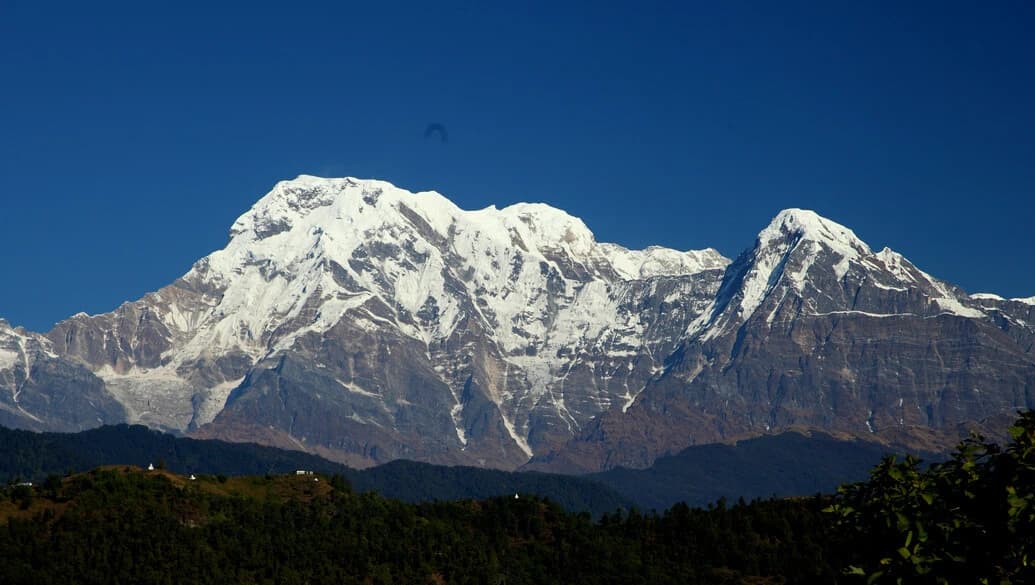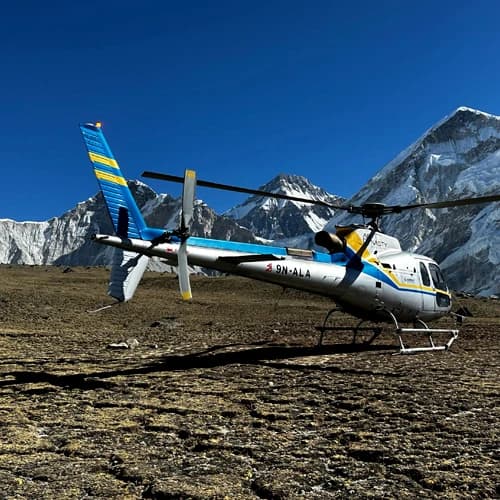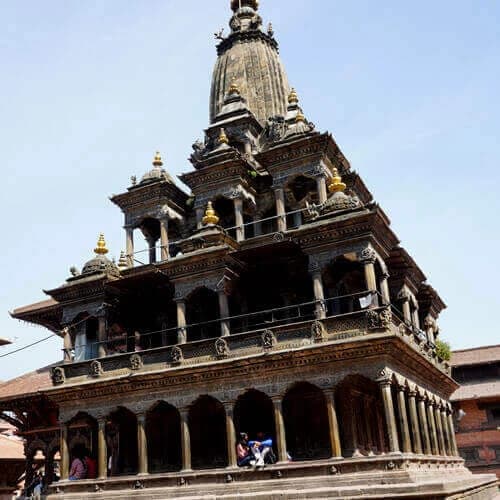Best Features of Annapurna Spring Expedition
- Climbing the tenth-highest mountain peak in the world at 8093 meters
- One of the most intimidating Himalayan summits even for seasoned mountaineers
- Trekking a beautiful trail in the Annapurna region to reach the base camp
- Surreal vistas of the Rhododendron covering the entire forest in a blanket of red and pink
- Witnessing various climatic and geological changes just in one excursion
- Rich cultural exposure and experience in the lower regions of the Annapurna
- Enjoying the unmatched natural beauty of the Annapurna region
Mount Annapurna Expedition in Spring Overview
The Annapurna Massif is one of the riskiest peaks to climb. The massif Annapurna range is a group of stunning mountains with the tallest Annapurna I (8091 m), thirteen 7000+ meters peaks like Annapurna II (7,937 m), Annapurna III (7,855 m), Annapurna IV (7,525 m), Annapurna South (7219 m), Tilicho Peak (7135 m), sixteen 6000+ meters peaks including Hiunchuli (6,441 m), Mt. Machhapuchre (6993 m) and a wide assortment of other mountains. Four summits make up Annapurna I, with the entire massif forming a barrier on the northern side.
The Annapurnas have a religious significance in Hinduism. The Sanskrit name Annapurna, which is traditionally translated as "Goddess of the Harvests," literally translates to "full of food" (in feminine form). Hindus believe Annapurna is an incarnation of Durga and a goddess of agriculture and fertility. It is believed that the lands of the lower regions of Annapurna are fertile and good for agriculture as it receives plenty of precipitation due to the blessings of Annapurna.
The King Mahendra Trust for Nature Conservation established the Annapurna Conservation Area Project (ACAP) in 1986, which is Nepal's first and largest conservation area and protects the entire Annapurna massif and its surroundings' flora and fauna. There are many top-notch treks in the Annapurna Conservation Area, including the Annapurna Circuit and the Annapurna Base Camp.
The captivating mountains and lush forests make the region one of the most popular tourist destinations and magical places on Earth. The potential of avalanches makes ascending Mount Annapurna one of the riskiest mountain expeditions. Because of the massive ice cliffs and seracs, the entire route is extremely tough for climbers to execute. Therefore, for people attempting to reach the top of Annapurna, we advise you to have prior peak-climbing experience and be in good physical condition.
Prospective climbers should carefully consider their route before beginning their ascent because there are numerous routes available across the Annapurna range. The Annapurna peaks continue to be some of the most dangerous summits in the world, although the number of fatalities on them has dropped recently.
Come on an unforgettable adventure to Annapurna with Outfitter Nepal this spring! Reservations are currently being taken for our Annapurna Expedition in Spring 2024 and 2025. Our experienced and highly professional Sherpas will lead you to the summit as part of our Spring Expedition to the top of the difficult Mount Annapurna from the Nepal side. Your safety is our top priority, and we have carefully designed the spring itinerary with that in mind.
The History of the Annapurna Expedition
On June 3rd, 1950, the French Annapurna Expedition, under the direction of Maurice Herzog, successfully ascended Annapurna I, the first 8,000-meter summit. Herzog lost the majority of his fingers during the expedition. Through the ages, Annapurna has been the subject of numerous epic mountaineering tales that combine skill and drama. The same summit was eventually climbed by a different crew barely 20 years later.
The mountaineering history was forever changed by Chris Bonington's team's attempt on Annapurna's South Face in 1970. Few climbers choose to ascend this mountain despite its treacherous popularity throughout the world. Leading climbs, difficult rescues, and the deaths of countless climbers, including Laki Ochoa de Olza and Park Yong-Seok, occurred on both the North Side and the wild, massive South Face. Until recently, all expeditions adopted the French pioneer's practice of not using supplemental oxygen.
Since then, numerous new routes have been climbed, including Reinhold Messner's route from the northwest side (1985), Kukuczka and Hajzer's route on the east ridge of Annapurna's east summit (8010 m) in October 1988, and Maciej Berbeka and Boguslaw Probulski's second ascent of summit 8051 m (a little bit east from the main summit) made in 1981 via right south pillar. It is noteworthy that the team, which was entirely made up of women, reached the summit in 1978.
Mount Annapurna VS Mount Everest
In comparison to Everest, Mount Annapurna is not particularly technically challenging, but the massive ice cliffs, avalanche-prone areas, and steep climbing terrain make Annapurna far more complex than Everest. It would be a straightforward ascent with little technicality, barring the elevation. The west face is more challenging, rarely used, and only used by highly-experienced climbers.
Even though Annapurna merely rises to a height of 26,545 feet, climbing it is much more complicated than climbing Everest. Compared to other snow peaks in the Himalayas, it is significantly steeper and lacks many flat areas where you can relax.
As avalanches frequently affect all 14 summits above 8000 meters, Annapurna is still in the death zone. Avalanches can sweep away trees, rocks, and other objects as they advance. They can also go at speeds of up to 100 mph, depending on how slick the terrain is. There are no permanent ropes or Sherpas on this mountain range, only expert climbers.
When compared to Mt. Everest, Annapurna's odds of being successfully climbed are incredibly slim. Not even half of those who trek the Annapurna Circuit or ascend the base camp reach the summit. And it's undoubtedly the reason that only experienced mountaineers try to reach the summit.
Although climbing at a high altitude is demanding, the difficulty is increased when combined with proper technical climbing. Everest has grown more secure as a result of improved equipment and forecasts. It's totally up to you whether you want to go for an Everest Expedition or Annapurna Expedition, as none of these are easy summits.
What Climbing Route is used for the Annapurna Expedition in Spring?
Mountaineers have access to a wide range of routes across the Annapurna range, so they should carefully select their route before beginning their ascent. Several routes have been used to reach this summit, often by setting up three camps and hiking down the West Face and Northwest Ridge. The Annapurna peaks continue to be among the world's most dangerous peaks, notwithstanding a recent decline in fatalities there.
After leaving Base Camp for two hours, the course begins with a strenuous 70-meter climb. There is a significant risk of seracs falling here. Even though it is less dangerous and avalanche-prone, the ascent from Camp I to Camp II is still arduous. A snowfield is traversed between the seracs of the shattered glacier on the switchback route between Camps 2 and 3. Some expeditions simply set up three camps, while others establish four. The quantity and length of fixed parts also vary.
How safe is the Annapurna Spring Expedition?
The ascent stage can occasionally be difficult and severe. Mount Annapurna's tremendous elevation in and of itself poses a significant risk. This lethal eight thousander poses a risk since high altitudes gradually deplete their oxygen supplies. The main aspect of climbing mountains is the recovery period following summiting or the acclimatization phase. The challenging terrain of Annapurna makes climbing more challenging for mountaineers, as do the unexpected climate changes.
These are some of the main explanations for why Mount Annapurna is the most dangerous mountain to climb. The previous fatalities and the tough ascent provide unquestionable threats. But Mount Annapurna is, without a doubt, the most daring and worthwhile peak to climb for thrill-seekers. The Annapurna is extremely dangerous because of its treacherous terrain, technical difficulties, accessibility challenges, unpredictable climate, and avalanches. Before attempting the ascent of this most treacherous mountain, every climber should be sufficiently trained and fit.
What are the Challenges During Annapurna Spring Expedition?
Spring is the most favorable season for climbing Mt. Annapurna due to comparatively more stable weather. However, Annapurna has a low fatality-to-summit ratio because of its challenging nature. Like any other 8000m summits, Annapurna requires a serious expedition to attempt. There is hope that in the future, the most secure and efficient ascending path will be used. The south face of Annapurna is some of the largest steep regions in the Himalayas.
Mountain climbers and mountaineers must navigate difficult terrain, massive cliffs, slick surfaces, and snowy cliffs as they attempt to summit a mountain. Due to the high mountain climbing skills needed to overcome the massif cliffs, snow, and ice obstacles, Mt. Annapurna is frequently referred to as one of the most dangerous summits in the entire globe.
Multiple times, Annapurna has seen fatal collisions, most of which were caused by snow slides and hurricanes. Trekkers will also have to pass through the death zone, which can be lethal if they do not move rapidly through it or spend more time there than necessary.
How to Prepare for the Annapurna Expedition in Spring?
Attempting to climb any mountain requires mountain climbing training and careful preparation. Climbing one of the 8-thousander is the most difficult of all. So, one must prepare well before attempting to summit Mt. Annapurna. Having earlier experience of climbing other high-altitude peaks above 7000+ meters is beneficial. If you don't have any such experience, go for other summits first and eventually think of climbing Mt. Annapurna.
It can be challenging to design a simulation that involves arranging ladders to cross actual mountain crevasses for training purposes. That's why your top priority should be strength, core, and endurance training. Cardiovascular activities of any kind, including long-distance jogging (10–20 km) three to four times per week, cycling for an hour or two hours, and hiking uphill with 15-20 kg of weight, are some of the suggested training techniques. We also suggest endurance training workouts as a pre-requisite. Starting the preparation at least five or six months before the commencement of your adventure is advised.
Along with physical preparation, you need to prepare for the adventure mentally. Remember, when booking this expedition, you're signing in for spending months in the isolated Himalayan terrain with difficult walks and climbing involved. The unstable weather circumstances in the high-altitude zone make it prone to avalanches and acute altitude sickness that might end your expedition. So, watch videos of people who've climbed the peak, talk to people who've attempted the summit, and mentally prepare yourself to face any challenge that might strike.
What is the cost of the Annapurna Expedition in Spring?
The cost of the Annapurna Expedition is based on several factors. The prices charged by various trekking and mountaineering companies depend on the services they provide. Local businesses provide a better price range than foreign ones because there is no middleman commission involved when booking your expedition with a locally-based company. The size of the group also impacts the cost. There may be group discounts available if you're traveling in a big group. After careful deliberation, we have decided on an expedition fee that is advantageous to both you and us. The starting fee at Outfitter Nepal for the Spring Annapurna Expedition is US$ —--.
Why go for Annapurna Spring Expedition with Outfitter Nepal?
We, Outfitter Nepal, are aware of the importance of a well-planned itinerary and strategic logistics for the accomplishment of the Annapurna Expedition. We are dedicated to preserving the mission's safety and effectiveness through our first-rate service.
To make it easier for everyone to coordinate and work together, we always place a major emphasis on keeping the group size modest. The mountain guides who will lead you are some of the best in the business and have climbed Annapurna several times. They have a wealth of training and experience. Our approach to mountaineering is in line with the decades of summit success that our guides, Sherpas, and support crew can offer.




